Buying a used truck can save money, but it comes with risks. This detailed guide provides essential tips for buying a used truck, helping you avoid costly mistakes.
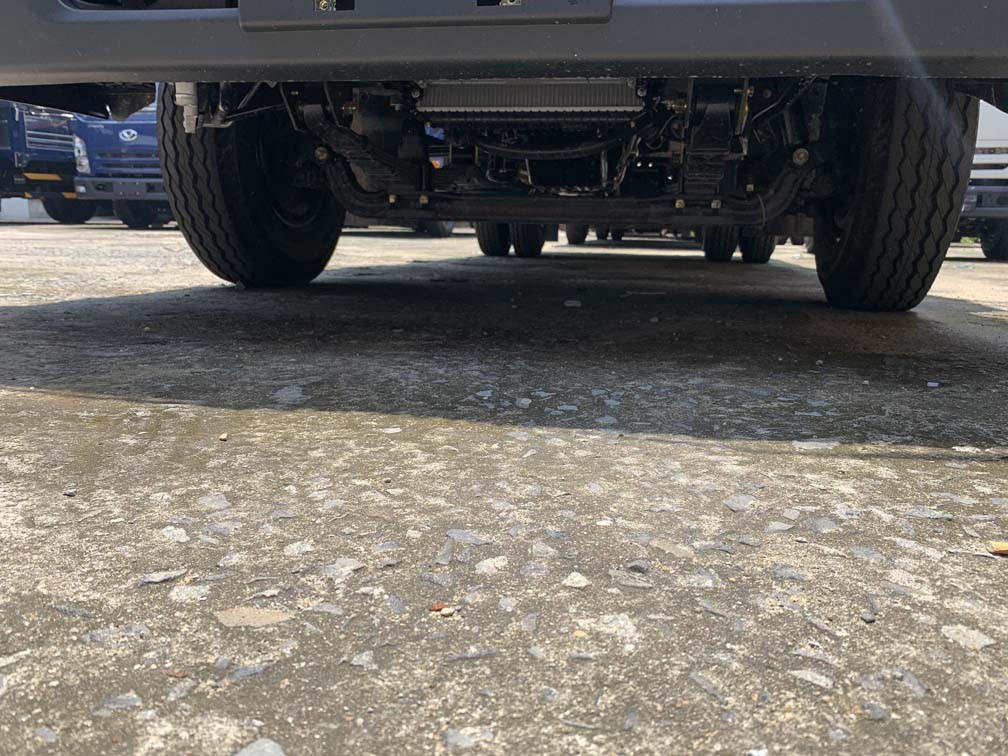 Truck parked on a level surface for inspection.
Truck parked on a level surface for inspection.
Why buy a used truck?
Used trucks are significantly cheaper than new ones, making them suitable for those on a budget. However, older vehicles may require more maintenance and repairs. So, what should you consider when buying a used truck to ensure you get a good deal?
Key Considerations When Buying a Used Truck
Before Inspecting the Truck:
- Wear old clothes and bring someone experienced with vehicles.
- Ensure the truck is parked on a level surface, in good lighting, and hasn’t been running for at least an hour before inspection.
1. Observe the Exterior:
- Check for Levelness: A tilted truck might indicate issues with the suspension or wheel bearings.
- Check Shocks: Push down firmly on each corner of the truck and release. If it bounces excessively, the shocks may be weak.
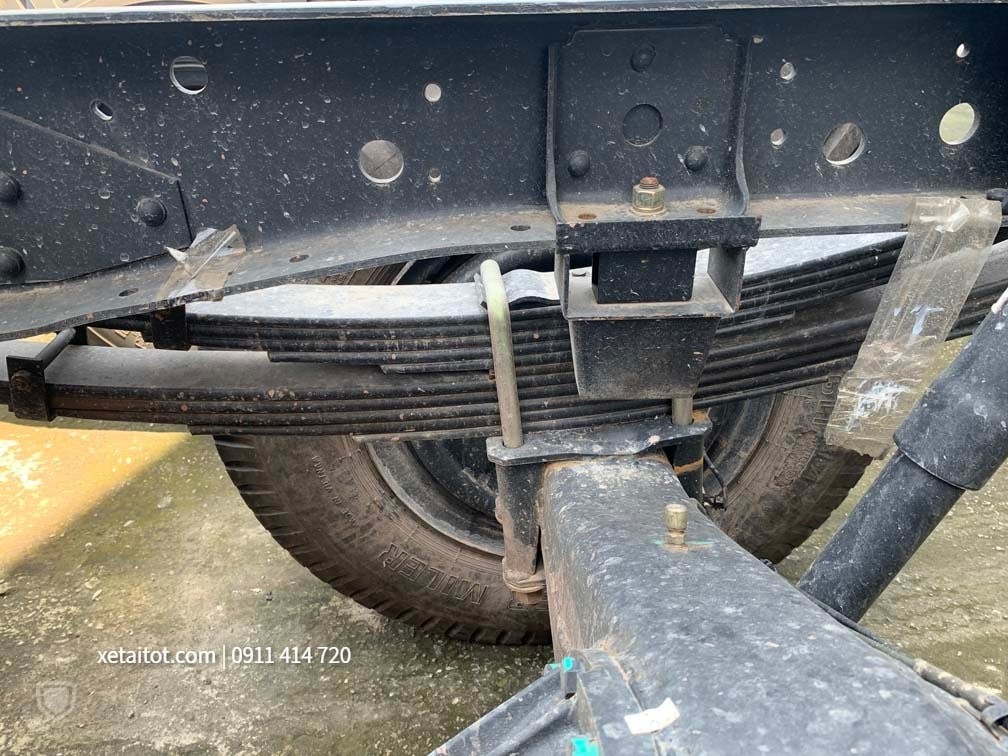 Checking the suspension system of a used truck.
Checking the suspension system of a used truck. - Check Wheel Bearings: Vigorously shake each wheel. If you hear metallic clanging, the bearings or chassis rubber might be damaged.
2. Inspect the Body:
- Check Seams, Scratches, Rust: Seams should be even and show no signs of repair.
- Check Gaps between Fenders and Doors: Large gaps suggest the truck might have been in an accident or improperly assembled.
- Check Paint Color: Uneven paint color may indicate repainting due to collisions. Examine the edges of body panels carefully.
 Examining the door handle of a used truck for paint and alignment.
Examining the door handle of a used truck for paint and alignment. - Check Frame: Use a magnet to check for patched dents in suspicious areas.
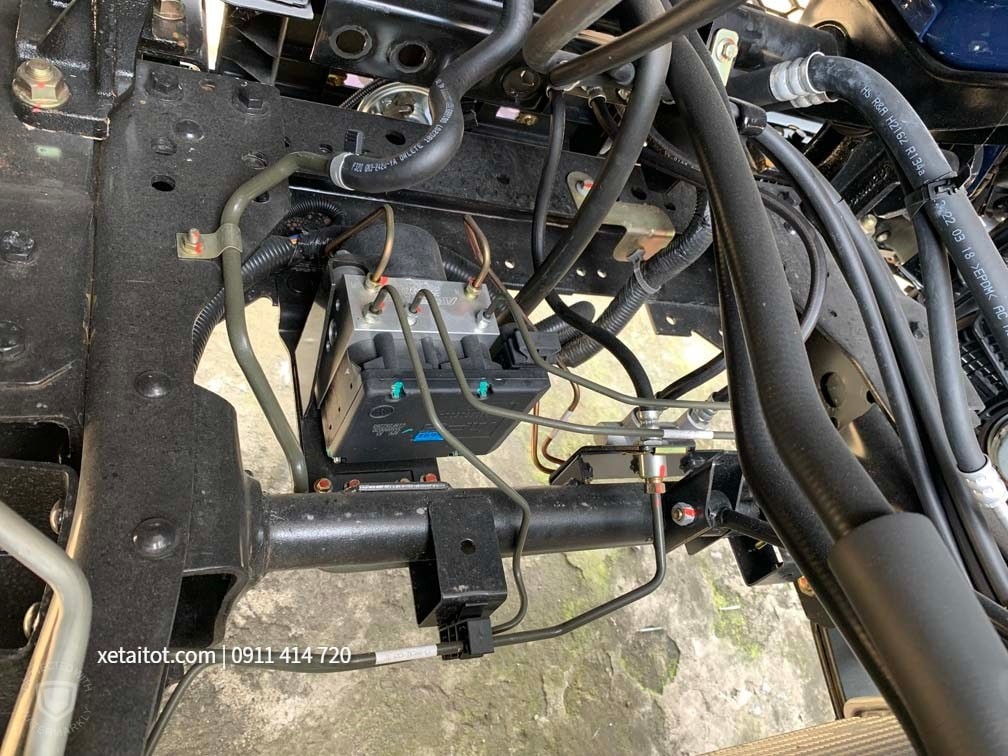 Inspecting the chassis and undercarriage of a used truck.
Inspecting the chassis and undercarriage of a used truck. - Check Doors, Hood, Trunk: Ensure they open and close smoothly and align properly. Check for door play and rubber seals.
3. Check the Lighting System:
- Test all lights: headlights, taillights, brake lights, turn signals, fog lights, etc., ensuring they function correctly and lenses are not cracked.
4. Inspect Tires:
- Check Tread Wear: Uneven wear may be due to incorrect alignment or suspension issues.
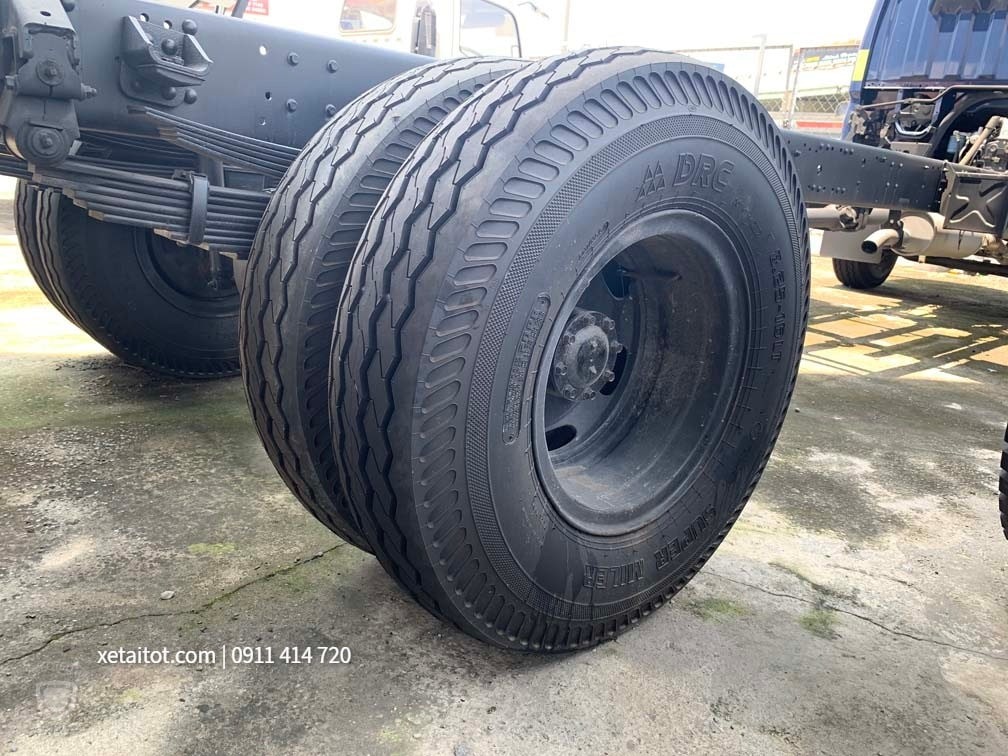 Checking the tire tread wear on a used truck.
Checking the tire tread wear on a used truck. - Check Tread Depth: Use a tire depth gauge to measure tread depth.
- Check for Cuts, Scratches: Inspect the wheel rims for chips or cracks.
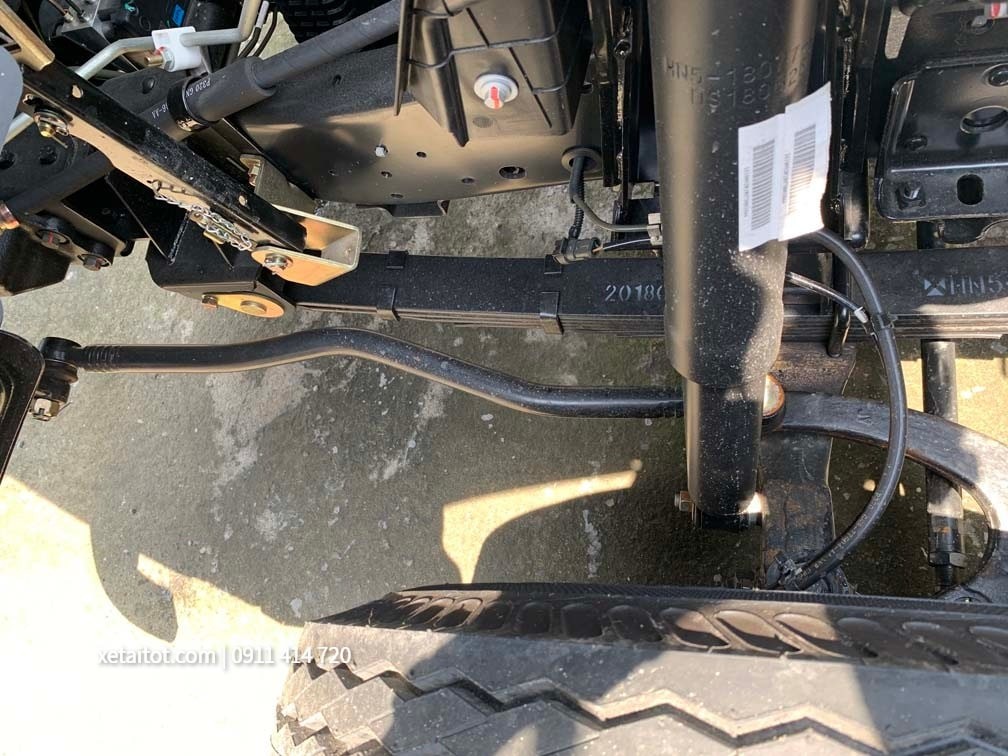 Close-up of a truck's steering linkage, part of the steering system inspection.
Close-up of a truck's steering linkage, part of the steering system inspection. - The steering system directly affects tire wear and should be thoroughly inspected.
5. Inspect Windows:
- Carefully check for cracks in the windshield and windows.
6. Inspect the Interior:
- Check for Odors: Musty or damp smells may indicate water leaks.
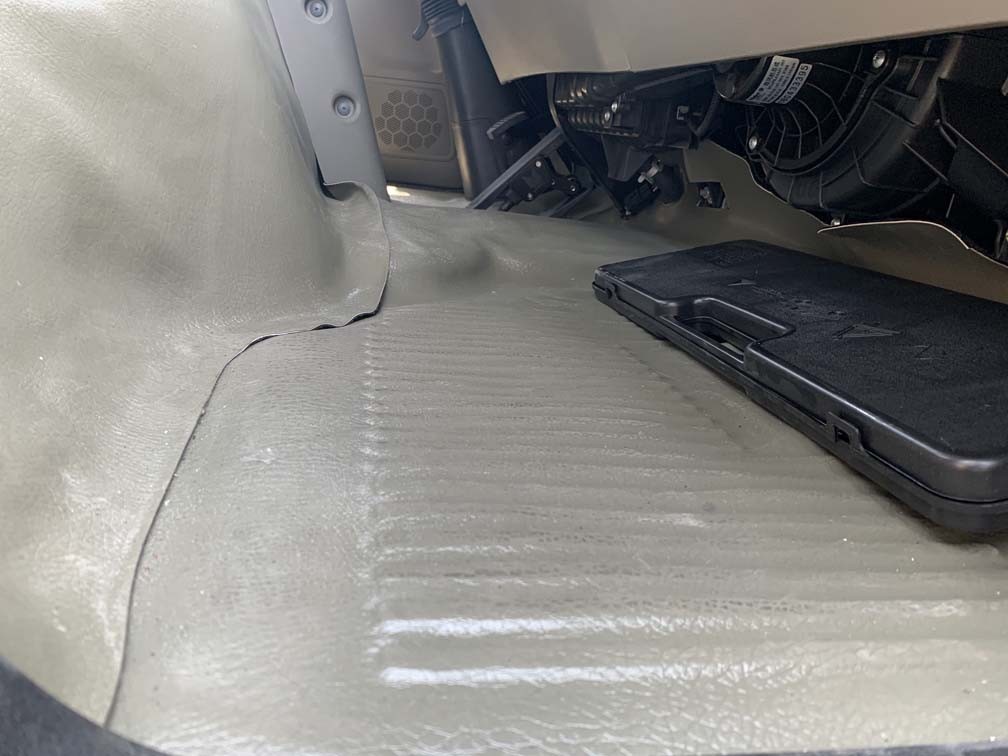 Inspecting the floor of a used truck for rust or water damage.
Inspecting the floor of a used truck for rust or water damage. - Check Pedal Rubber Pads: Worn pedal pads suggest heavy use.
- Check Equipment: Start the engine and test all buttons, switches, levers, power windows, locking system, etc.
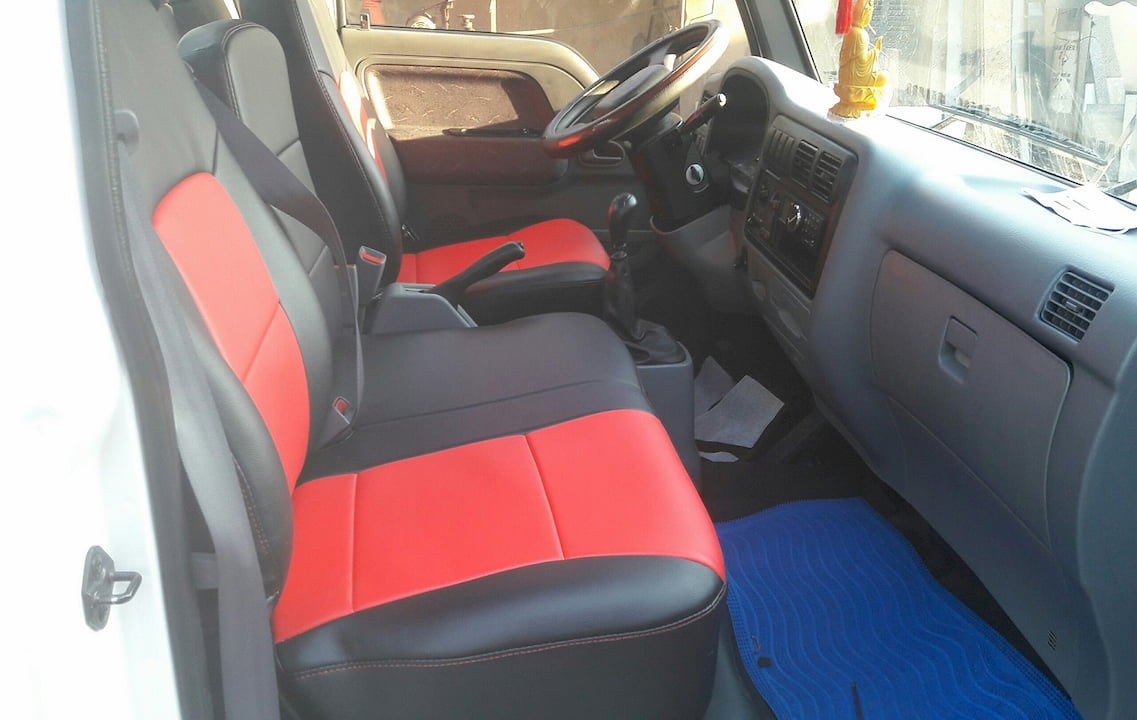 Interior view of a used truck cabin for inspection.
Interior view of a used truck cabin for inspection. - Check Audio System, Seats, Air Conditioning: Ensure they are working properly.
 Control buttons and switches inside a used truck cabin.
Control buttons and switches inside a used truck cabin.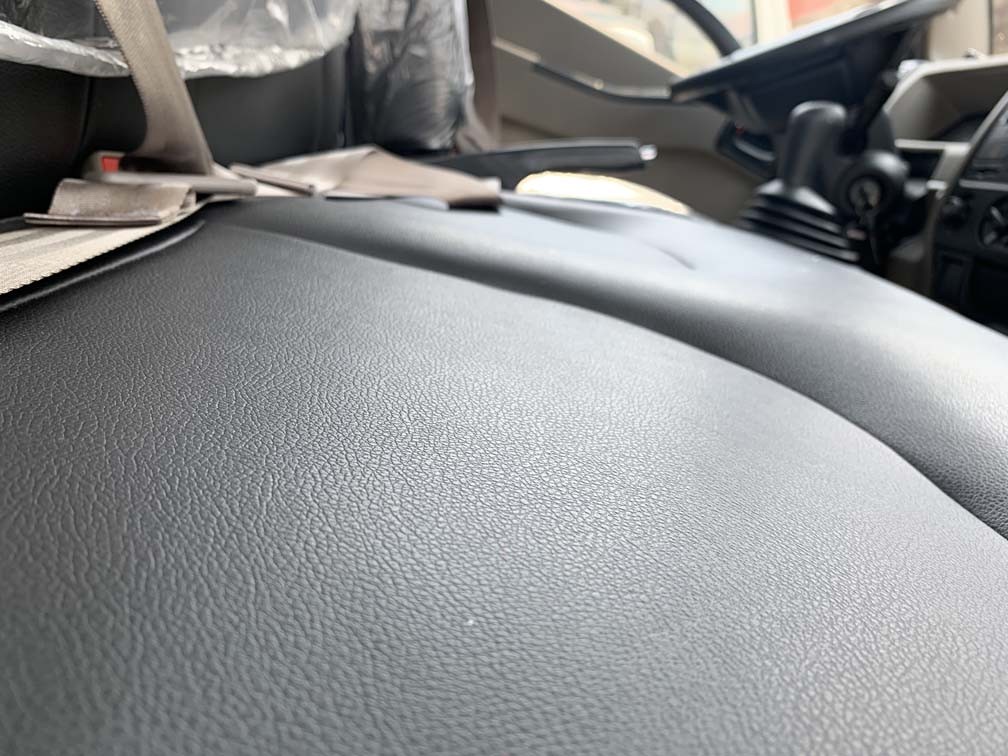 Truck seats in the cabin, part of the interior inspection.
Truck seats in the cabin, part of the interior inspection.
7. Inspect the Trunk/Cargo Area:
- Check for signs of water leaks, the condition of the spare tire, and included tools.
8. Inspect the Engine Compartment:
- General Check: Look for oil leaks, corroded battery terminals, and loose wires.
- Check Wires, Hoses, Belts: Ensure they are in good condition, not cracked, broken, or frayed.
9. Check Oil, Coolant, Battery:
- Check oil level, color, and smell of engine oil and transmission oil.
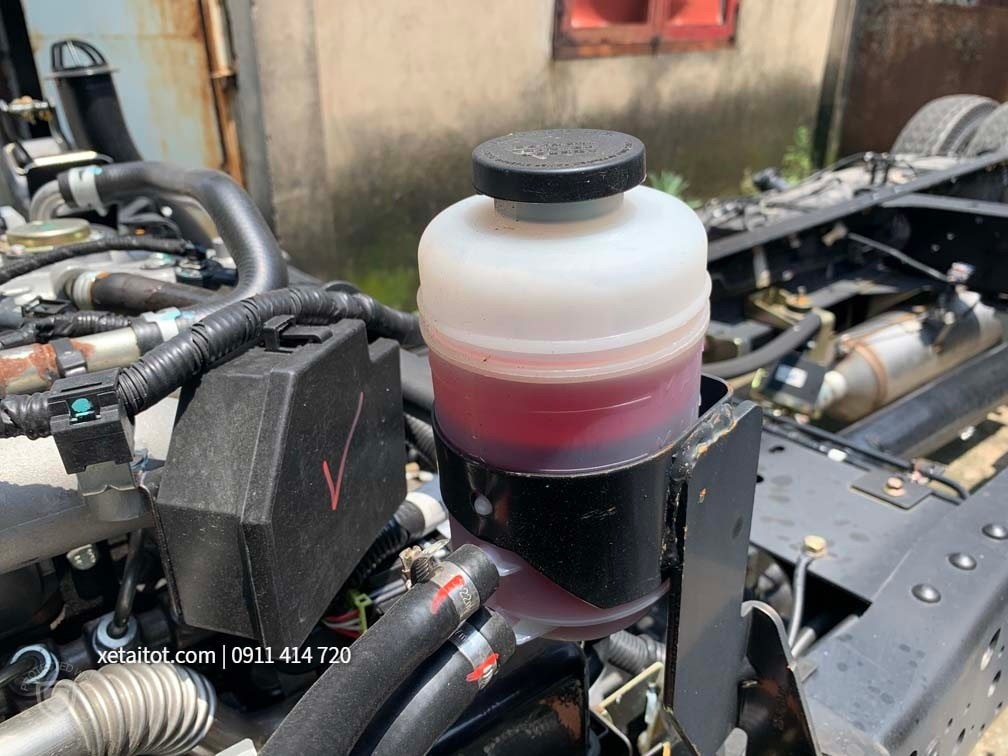 Checking fluid levels and condition under the hood of a used truck.
Checking fluid levels and condition under the hood of a used truck.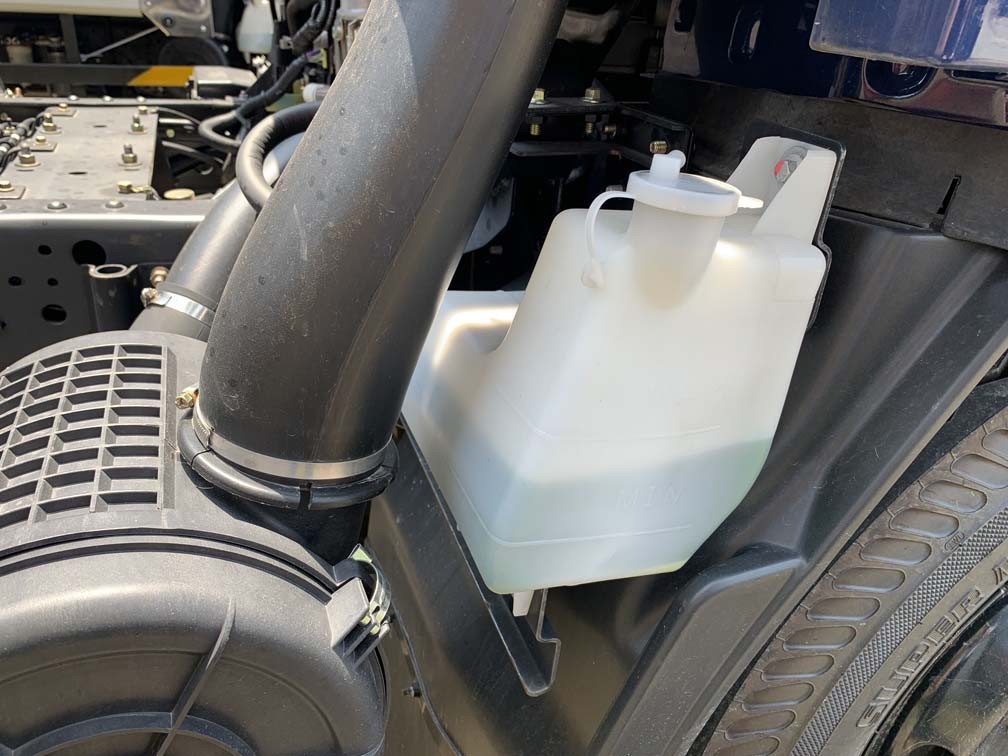 Checking the coolant level in a used truck's engine.
Checking the coolant level in a used truck's engine. - Check coolant color.
- Check battery water level.
10. Inspect the Undercarriage:
- Check for oil and coolant leaks.
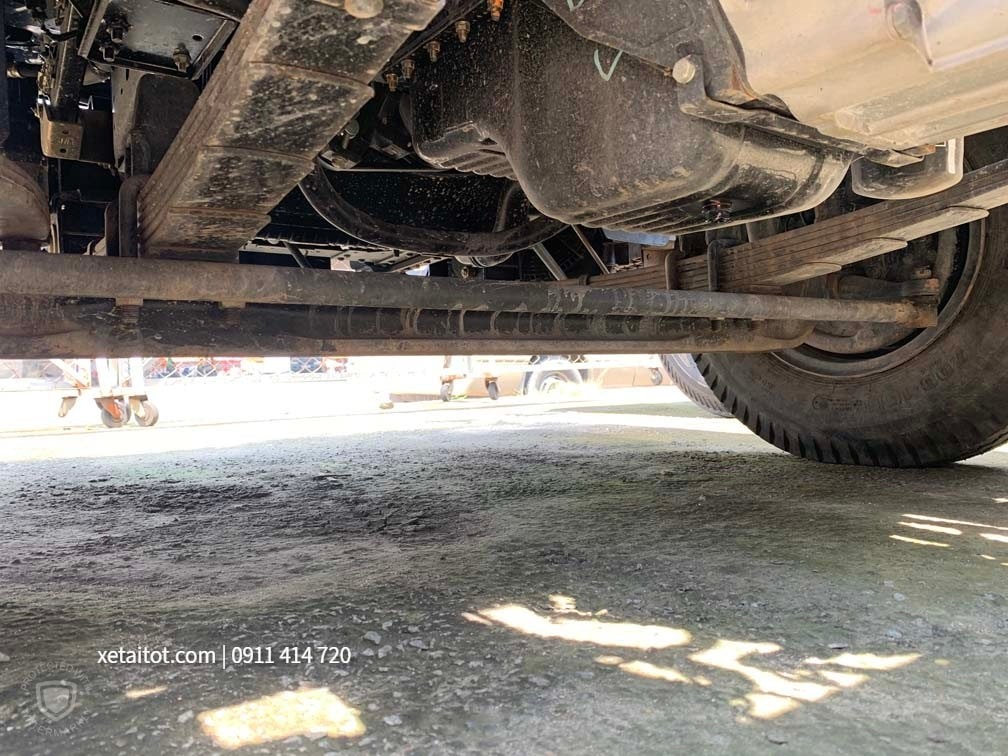 Inspecting the chassis and undercarriage of a used truck for damage or leaks.
Inspecting the chassis and undercarriage of a used truck for damage or leaks. - Check undercarriage components like the driveshaft and exhaust system.
11. Test Drive the Truck:
- Check Steering Wheel: Turn the steering wheel back and forth to check for play.
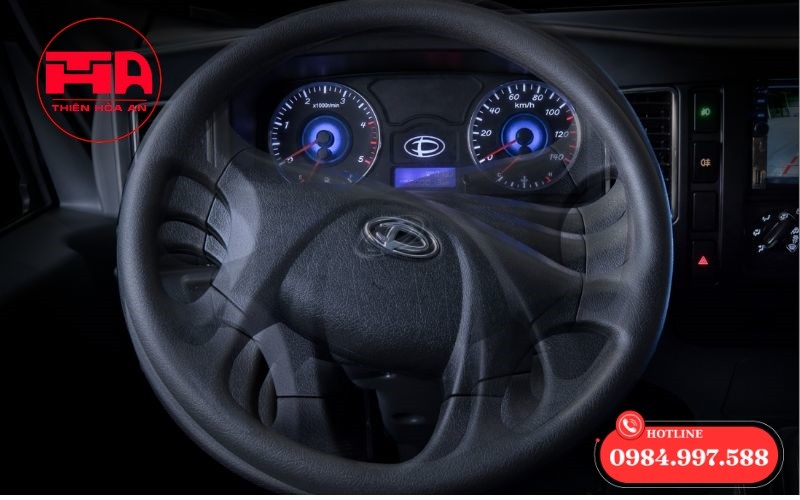 Checking the steering wheel and play in the steering system of a used truck.
Checking the steering wheel and play in the steering system of a used truck.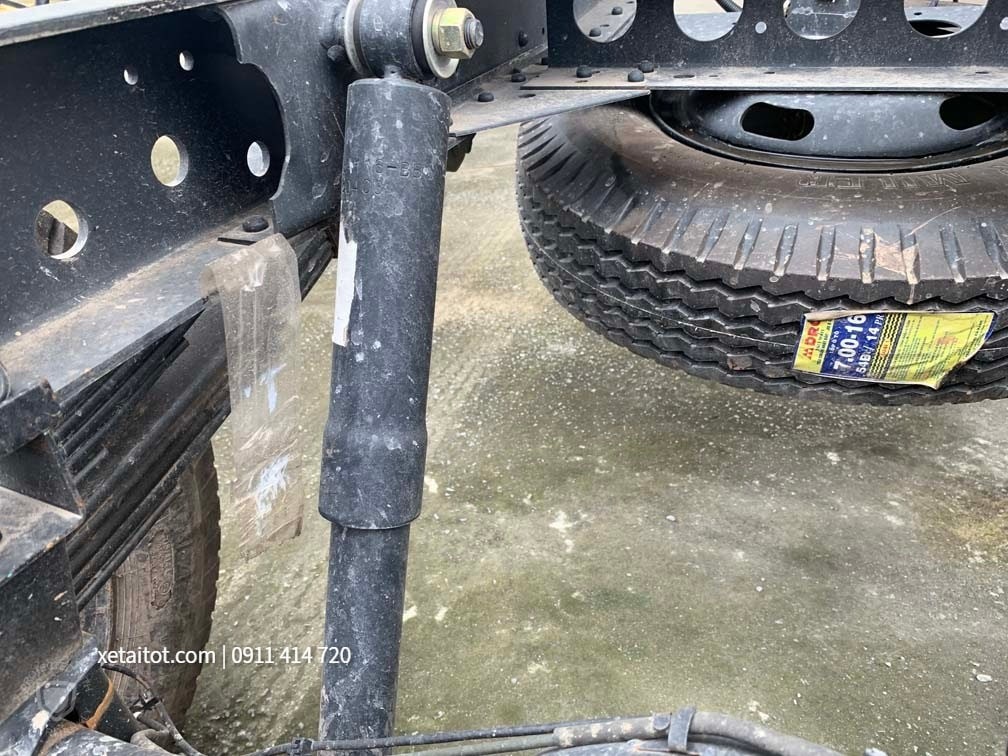 Close-up of a truck's suspension system components.
Close-up of a truck's suspension system components. - Check Engine, Transmission, Brakes: Ensure the engine runs smoothly, the transmission shifts gears smoothly, and the brakes work effectively.
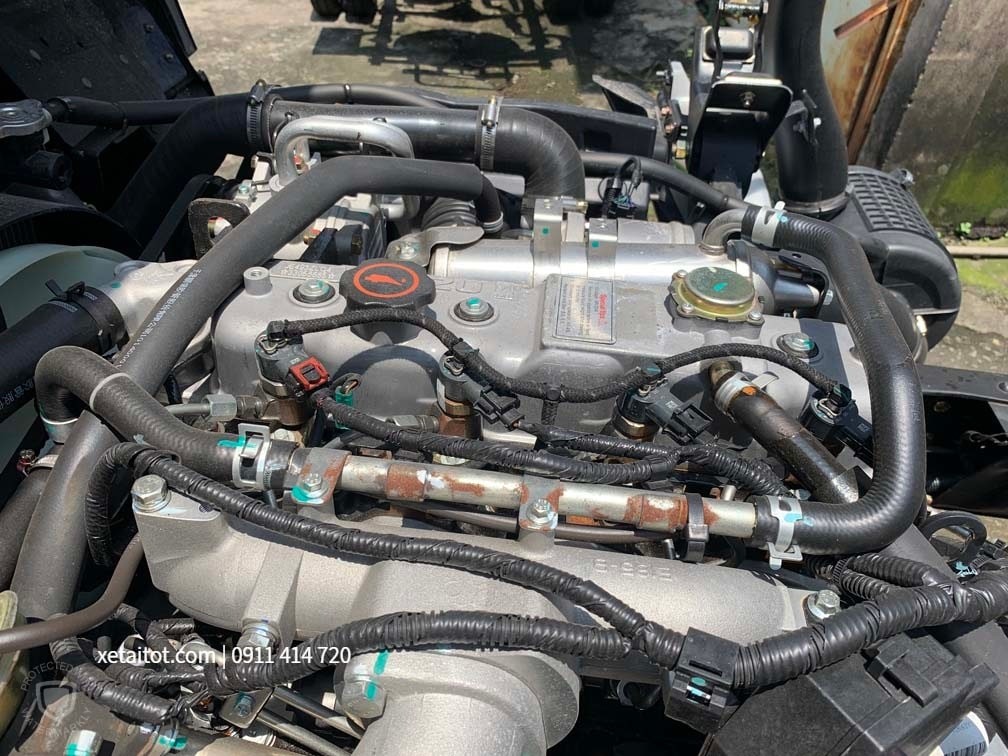 Listening to the engine sound of a used truck during inspection.
Listening to the engine sound of a used truck during inspection.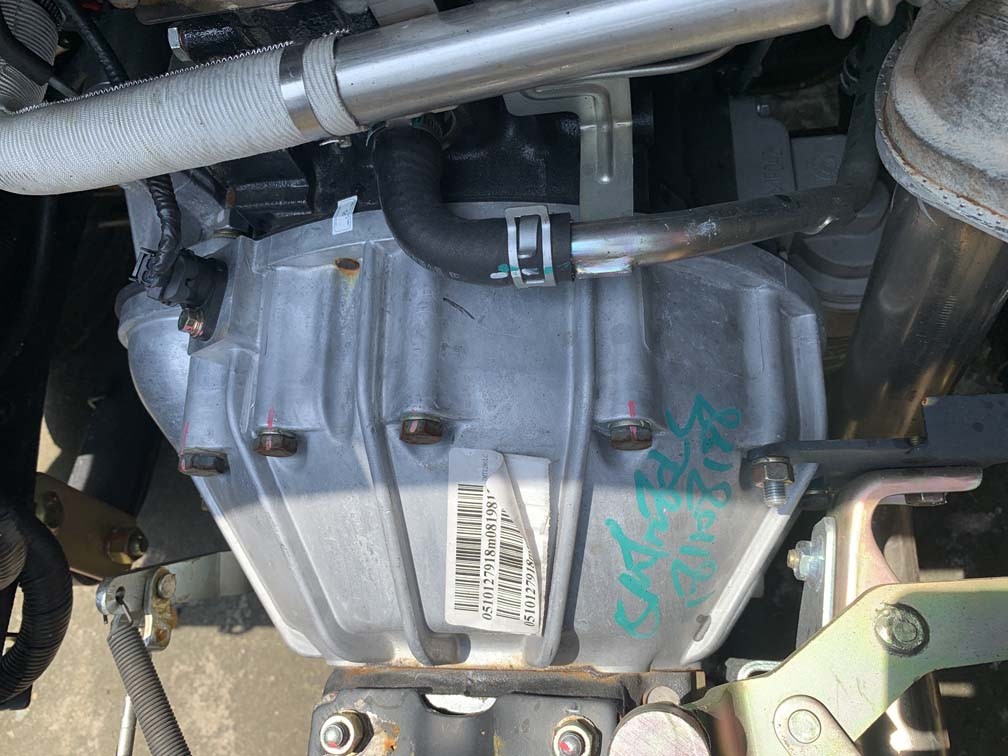 Inspecting the gearbox area of a used truck.
Inspecting the gearbox area of a used truck.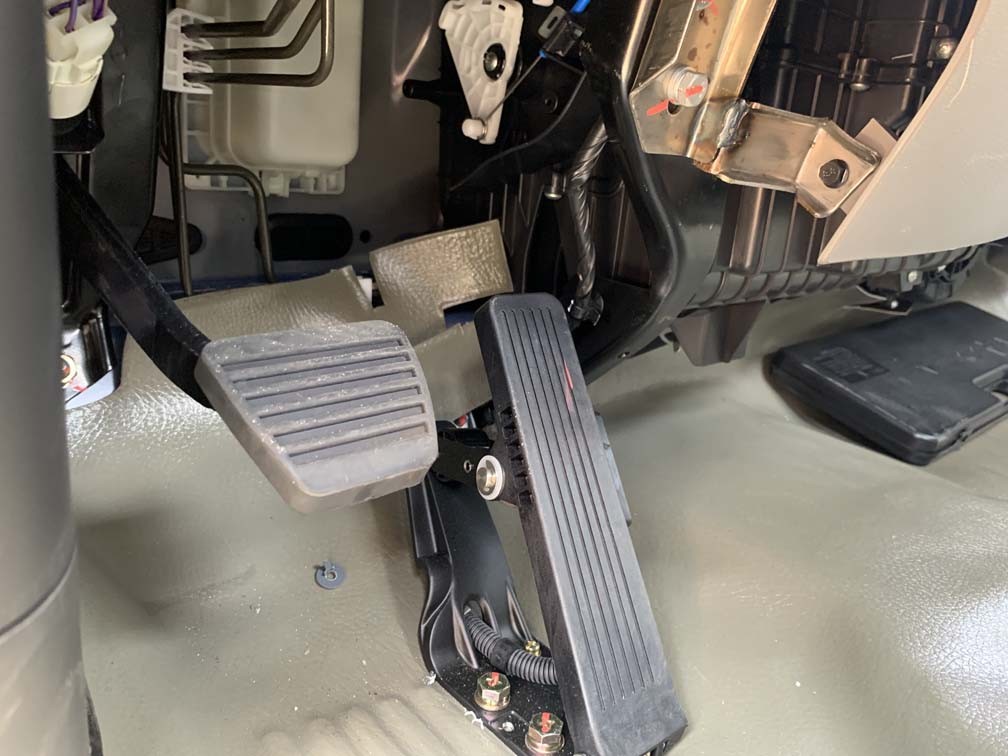 Checking the pedals in a used truck, including brake and clutch.
Checking the pedals in a used truck, including brake and clutch. - Test drive on various terrains to check the suspension.
12. Check Vehicle Documents:
- Verify the VIN, engine number, payload capacity, owner information, registration, etc.
- Confirm the truck has no outstanding traffic tickets or unpaid road tolls.
Conclusion:
When buying a used truck, thorough inspection is crucial. Pay close attention to the undercarriage, steering system, engine, and vehicle documents. Research market prices and negotiate a reasonable price. We wish you luck in finding the right truck!
